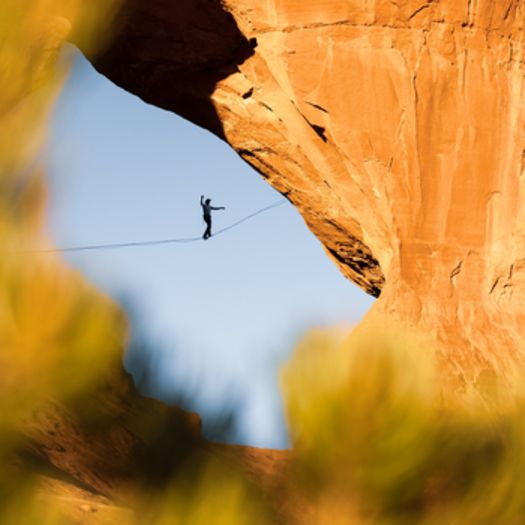
How to Set Up Your Fifth Wheel at the Campground
Here are some helpful tips from our partners at the RV Aftermarket for setting up your fifth wheel at the campground.
Setting up a fifth wheel at a campground might seem overwhelming at first, especially for new RVers. But with a little practice and a clear step-by-step plan, it becomes a smooth and manageable process. This guide is designed to walk you through setting up your fifth wheel at your campsite—from checking in to getting comfortable and ready to enjoy your trip.
RELATED: Setting up a travel trailer at the campground? Here’s a detailed guide with recommended gear from Go RVing
1. Check In at the Campground
Start by stopping at the main office to check in. You’ll typically receive a map, your site number, and a list of park rules. Take a moment to read through the rules and ask any questions about utilities, quiet hours, or park amenities.
2. Inspect and Position Your Site
Before backing in, inspect the site for potential obstacles—look out for picnic tables, trees, fire pits, or uneven ground. Make sure there is adequate space to extend your slide-outs and awning. Also, locate water, sewer, and electrical hookups so you can align your rig properly for easy connection.
Tip: Use a spotter or backup camera to help you maneuver into place safely.
3. Level Side-to-Side
Leveling is essential for comfort and for the proper operation of appliances like your refrigerator and air conditioner. If your fifth wheel has automatic levelers, great—just follow the prompts. If not:
- Use a bubble level to determine how far out of level your rig is side-to-side.
- Stack leveling blocks next to the tires on the low side.
- Create a pyramid stack for added stability and back the trailer over the blocks until level.
Recommended Products:
4. Chock the Tires
Once level, chock the wheels to prevent any movement. Place wheel chocks both in front and behind the tires. For tandem or triple axle rigs, use locking chocks to keep the tires from shifting.
Recommended Products:
5. Disconnect from the Tow Vehicle
With your fifth wheel secure, it’s time to disconnect the hitch. Since fifth wheel hitches vary, consult your owner's manual for specific instructions. Generally:
- Lower the front landing gear to stabilize.
- Release the hitch latch.
- Slowly pull your truck forward 5–10 feet to ensure full disconnection.
Finally, adjust the front-to-back level using the landing gear.
Recommended Products:
6. Hook Up to Shore Power
Match your RV’s amperage with the campground pedestal. Most fifth wheels are 50-amp, but some are 30-amp. If necessary, use a dog bone adapter.
- Turn off the breaker at the pedestal.
- Plug in a surge protector first to protect your rig from power issues.
- Then plug in your power cord and flip the breaker on.
Recommended Products:
7. Hook Up to Fresh Water
Begin by flushing the campground spigot briefly to remove debris.
- Attach a water pressure regulator to protect your plumbing.
- Then connect a water filter to improve water quality.
- Finally, attach your drinking water-safe hose to the inlet on your RV.
Recommended Products:
8. Connect Sewer Hose
Safety first—always wear disposable waterproof gloves!
- Remove the cap on your RV's sewer outlet.
- Connect your sewer hose to the outlet and then to the campsite sewer inlet.
- Keep the black tank valve closed except when you’re ready to dump. Leaving it open can lead to waste buildup.
- The gray tank (which collects sink and shower water) can remain open, but close it before dumping the black tank to help flush the hose clean.
- Dump black tank first, then gray tank.
- Remove the hose from the RV end first and lift to drain remaining liquid into the inlet.
Recommended Products:
9. Extend Slide-Outs and Awnings
Before extending, double-check for clearance inside and outside. Use a walkie-talkie or voice communication to monitor the exterior.
- Extend the slides until they stop—don’t force them further.
- Check the level again, as the added weight may shift your rig.
- Extend the awning if desired and secure it properly.
Recommended Products:
10. Turn on Propane and Interior Systems
Turn on your propane valve. If you have two tanks, use one at a time so you always have a backup.
- Test light your range burners to make sure propane is flowing.
- Turn on the water heater, air conditioner, and refrigerator.
- Carefully open cabinets—items may have shifted in transit.
- Flush toilet chemicals into the black tank with plenty of water to keep odors at bay.
Recommended Products:
Final Thoughts
Setting up your fifth wheel may feel a bit overwhelming at first, but once you follow this process a few times, it will become second nature. Always take your time, avoid distractions, and consult your owner's manual or a local RV dealer with any questions.
Happy camping—and welcome to the world of RVing!











